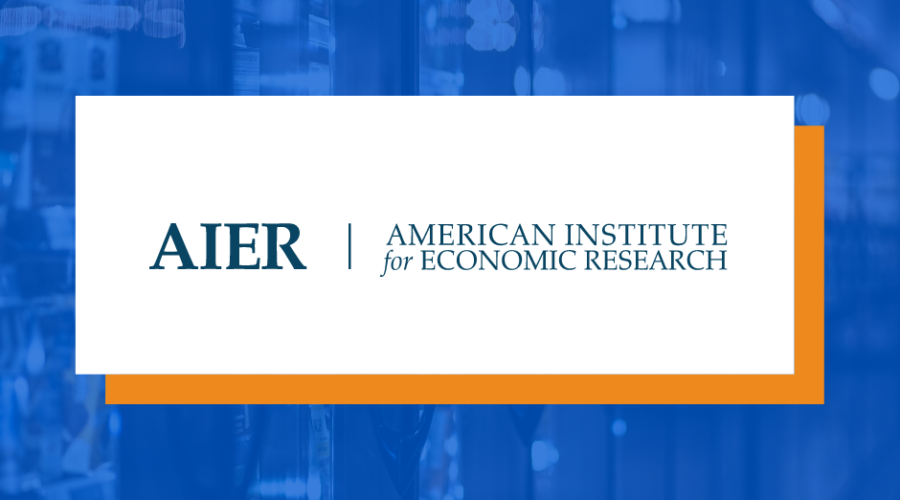The Counterfactual: Are e-cigarettes dangerous?
Republished from Clivebates.com with the consent of the author
The World Health Organisation continues to present misleading information about e-cigarettes that spreads doubt and confusion among the public, media and policymakers. This post reviews its latest Q & A and finds multiple errors of analysis, misleading statements, and obvious biases.
The World Health Organisation maintains a Q & A on e-cigarettes. It was updated on 25 May 2022.
This has been updated several times (see history below). In each of its incarnations, this web page has presented a profoundly misleading account of the risks and benefits of e-cigarettes. It ignores the fact that eight million people are dying annually from smoking (around the same order as COVID-19) and that hundreds of millions of smokers could benefit from switching to low-risk alternatives to smoking. The Q & A is primarily a vehicle for promoting prohibition and generating hostility to the pragmatic public health strategy of tobacco harm reduction. It is anti-scientific, its information is misleading, and its effect or purpose is to sow confusion and doubt rather than to candidly explain e-cigarettes.
I have set out the main sections of the latest Q & A below with a short general commentary on each section followed by the main claims in each section drawn out in block quotes followed by comments.
The table of contents below follows the structure of the WHO’s Q & A. I have highlighted each statement in the WHO Q & A in a box quote and followed by a short commentary on each.
The very framing of the question reveals the problem. The real question is “how dangerous?” This question should be asked in two ways:
(1) how dangerous compared to the product that dominates the market, that is cigarettes?
(2) how dangerous compared to some sort of benchmark of acceptable risk, for example, occupational exposure standards or other comparable behaviours?
If vaping is much less risky than smoking, then there is a large health benefit for people who switch from smoking to vaping. If the use of a product is at a level of risk that is within our normal tolerance of risk, then there is not much reason to mount a big public health response to it – as with caffeine and coffee or moderate alcohol consumption.
In the following paragraphs, WHO never addresses the “how dangerous?” questions. But without addressing them, it has no basis for informing or advising anyone or for suggesting appropriate policy responses.
Electronic cigarettes (or e-cigarettes) are the most common form of electronic nicotine delivery systems (ENDS) and electronic non-nicotine delivery systems (ENNDS) but there are others, such as e-cigars and e-pipes. ENDS contain varying amounts of nicotine and harmful emissions.
E-cigarette emissions typically contain nicotine and other toxic substances that are harmful to both users, and non-users who are exposed to the aerosols second-hand. Some products claiming to be nicotine-free (ENNDS) have been found to contain nicotine.
Nicotine is the main reason why people smoke or vape. It is a relatively mild psychoactive drug that has several effects – such as helping to control stress and anxiety and improving concentration. That is why people use it. It is dependence-forming, but nicotine is not very harmful in itself. It is not a cause of intoxication, oblivion, violence or, over the long term, serious disease.
The harm to health is mainly done by the smoke: the toxic gases and sticky particles inhaled into the lungs along with the nicotine (sometimes called ‘tar’). The hazardous chemicals in tobacco smoke that are the main cause of cancer, cardiovascular and respiratory disease are mainly products of combustion formed in the tip of the burning cigarette and as the smoke cools. In contrast, e-cigarettes heat a flavoured nicotine liquid to form an aerosol of tiny droplets, which contain nicotine. But because the liquid is heated but not burnt, there is no combustion and therefore no products of combustion. So the harmful agents in cigarette smoke are either present at much lower levels or not detectable or measurable at all.
Biomarkers show much lower toxic exposures. This can be seen experimentally by measuring hazardous agents found in the blood, saliva and urine, so-called biomarkers of exposure. These measurements show dramatically reduced exposures to the main hazardous substance of concern compared to smoking. Experts commissioned by Public Health England reviewed the available biomarker literature in 2018 and concluded:
Vaping poses only a small fraction of the risks of smoking and switching completely from smoking to vaping conveys substantial health benefits over continued smoking. Based on current knowledge, stating that vaping is at least 95% less harmful than smoking remains a good way to communicate the large difference in relative risk unambiguously so that more smokers are encouraged to make the switch from smoking to vaping. It should be noted that this does not mean e-cigarettes are safe. [link]
The consumption of nicotine in children and adolescents has deleterious impacts on brain development, leading to long-term consequences for brain development and potentially leading to learning and anxiety disorders.
WHO draws on speculative theories that are based largely on rodent studies and large doses of nicotine to make this claim. The key point is that despite many generations of adolescent nicotine users growing up as smokers since the 1950s, no one has so far identified any lasting cognitive impairments in those adults who started using nicotine as adolescent smokers over this long period. It is a difficult area to study, and it is possible there are some ill effects, but this is far from established and definitely not with the unequivocal confidence conveyed by WHO in this answer.
Writing in the American Journal of Public Health in 2021, fifteen former presidents of the Society for Research on Nicotine and Tobacco summarised the state of knowledge as follows:

Nicotine is highly addictive …
It is wrong to make the general claim that “nicotine is highly addictive”, although this statement is common. It depends on what is meant by addiction and how the nicotine is taken. I have addressed the question about nicotine addiction under the question heading “Are ENDS addictive?” below.
…and some evidence suggest that never-smoker minors who use ENDS can double their chance of starting to smoke tobacco cigarettes later in life.
WHO falsely asserts the operation of a so-called gateway effect. These claims are often repeated as if there is some evidence that the prior vaping caused the subsequent smoking. There is no evidence to support a causal gateway effect and much to suggest the opposite, notably the dramatic decline in youth smoking in the United States that coincided with a rapid rise in youth vaping, sometimes referred to as the “youth vaping epidemic”.

Common liability is the far more plausible explanation. There is a completely different and much more likely explanation for the observed association: that the same sort of things that incline people to vape also incline them to smoke. These would be things like genetics, parental smoking, mental health status, school performance and delinquency, rebelliousness, and aspects of the family and community context. This is known as confounding by common risk factors, or sometimes as “common liability”. The evidence strongly supports this explanation, not the gateway theory. It means that e-cigarette use is more likely to be concentrated in people who have smoked or would otherwise smoke – offering a significant health benefit concentrated within the population most at risk.
Evidence reveals that these products are harmful to health and are not safe. However, it is too early to provide a clear answer on the long-term impact of using them or being exposed to them. Some recent studies suggest that ENDS use can increase the risk of heart disease and lung disorders. Nicotine exposure in pregnant women can have similar consequences for the brain development of the fetus.
There is no convincing evidence that ENDS are seriously harmful to health. Once again we see the use of “harmful to health” and “not safe”, without asking the “how harmful?” or “how unsafe?” questions. The (unstated) studies that supposedly show that ENDS increases the risks of lung or heart disease are highly problematic. Almost all ENDS users old enough to experience significant disease have been long-term smokers. It is impossible to separate the effects of their smoking history from the marginal effects of their time as vapers. Some studies even count heart or lung disease episodes that occurred before the vaping started in their calculations of vaping risk. There are many studies that show that ENDS have an observable effect on the body, but there is little to show that these effects amount to a clinically significant risk.
This is how the US National Academies of Science, Engineering and Medicine summarised the risks in its 2018 report:

The long term effects may be negligible. The statement about the long-term is really a statement of the obvious – we do not have the luxury of time travel to observe with certainty what the long term effects will turn out to be. The health effects of long term use may well turn out to be trivial. We do know the toxic exposures involved with vaping are much lower than for smoking (the second point) and therefore we should default to expecting health burdens to be much lower too. Also, it is worth bearing in mind that people can smoke for two decades (from say age 15 to 35) or more and not suffer any noticeable loss of life expectancy. It takes a lot to get sick, even from smoking.
ENDS use can also expose non-smokers and bystanders to nicotine and other harmful chemicals.
There is no evidence of material risk to bystanders. WHO continues with its unquantified approach to risk. The framing “can also expose” is wholly misleading in this context. What matters is how much exposure and to what sort of hazard? I have responded to this assertion under WHO’s question 5. Are secondhand ENDS emissions dangerous?
Electronic delivery systems have also been linked to a number of physical injuries, including burns from explosions or malfunctions, when the products are not of the expected standard or are tampered with by users.
E-cigarette use is likely to substantially reduce injuries. Again, some context is required. Yes, there are isolated incidents involving battery malfunctions or short circuits (e.g. through contact with coins in pockets). But this comes nowhere close to the carnage caused by smoking-related fires. The US National Fire Protection Association gives some perspective:
- During 2012-2016, an estimated annual average of 18,100 (5%) reported home structure fires started by smoking materials killed an average of 590 (23%) people annually, injured 1,130 (10%) per year, and caused $476 million in direct property damage (7%) per year.
- One in 20 home (5%) home structure fires were started by smoking materials. These fires caused almost one in four (23%) home fire deaths, and one in 10 (10%) home fire injuries.
- Smoking was the leading cause of home fire deaths for the five year period from 2012-2016. Overall, one of every 31 home smoking material fires resulted in death.
Has it occurred to WHO that mass switching from smoking to vaping would dramatically reduce the problem of fires and burns? This is because they do not involve an ignition source.
Accidental exposure of children to ENDS e-liquids pose serious risks as devices may leak, or children may swallow the poisonous e-liquid.
Nicotine e-liquids pose a minor risk to safety. Again, what matters is the scale of this problem and other problems that it offsets. There are accidents caused by almost everything – not least medicines, cleaning fluids, cosmetics and alcohol. Again what matters is the “how much harm?” question. A look at the reports of US Poison Control Centers data (Annual report 2020 – PDF) gives some perspective:

Table 17C & 17D
Tobacco, nicotine and e-cigarettes combined are ranked at 25 in pediatric exposure reports (17C) and don’t figure in the top 25 for deaths (17E). But this combines tobacco and e-liquid exposure. Table 22 in the report shows that tobacco products account for 72% of the combined total pediatric exposures for tobacco, nicotine and e-cigarettes. Not mentioned by WHO: nicotine medications accounted for 1,608 poison exposures in 2020.
Written by Clive Bates
















